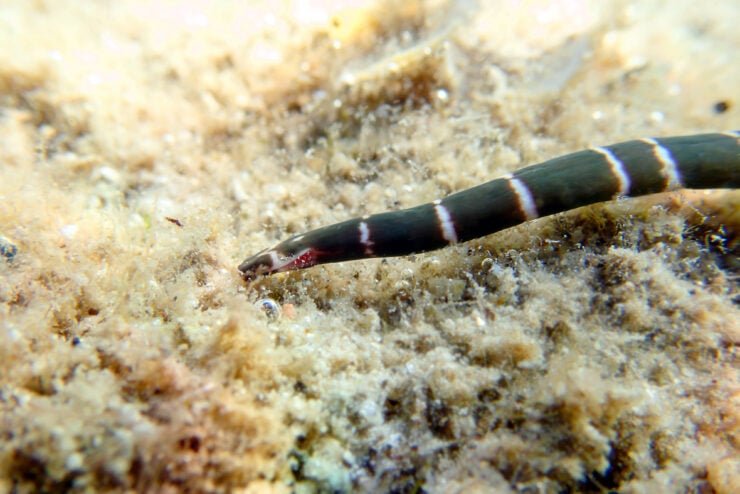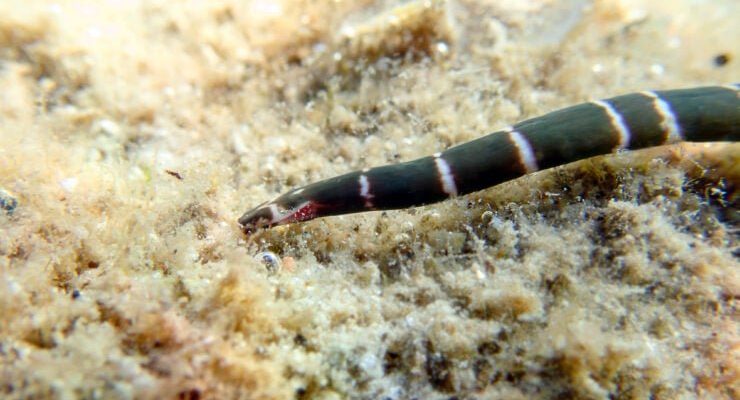
Here’s the thing: ribbon worms can survive in aquariums, but it’s not as straightforward as just dropping them in a tank filled with water. There are several factors to consider, like their habitat needs, diet, and compatibility with other aquarium residents. To help you navigate this slippery topic, let me break down the essentials.
Understanding Ribbon Worms: What Are They?
Ribbon worms, or nemerteans, are an interesting group of animals that exist in oceans worldwide. They’re called “ribbon” worms because of their elongated, ribbon-like shape. Most species are quite colorful, sporting various shades of pink, purple, and green, which makes them visually appealing.
Typically found in sandy or muddy environments, **ribbon worms** thrive in coastal areas and are usually predatory, hunting down small invertebrates. Their soft bodies can grow surprisingly long—some species can reach up to 30 feet! So, it’s easy to see why having them in an aquarium might raise a few eyebrows.
Understanding what ribbon worms are gives you a better foundation for figuring out how—or if—they can thrive in a home aquarium. Their biology plays a big role in what kind of setting they need to flourish.
What Do Ribbon Worms Need to Survive?
If you’re considering adding a ribbon worm to your aquarium, you’ll need to think like a ribbon worm—this means understanding their needs. They prefer saltwater environments, so fresh or brackish water is a **no-go**. You’d need a marine aquarium setup to keep them happy.
Here’s a list of conditions they require:
- Temperature: Most ribbon worms thrive in water temperatures between 60°F to 75°F, so you’ll want to maintain that range.
- Salinity: Keeping the salinity levels around 1.020 to 1.025 specific gravity is essential for their health.
- Substrate: A sandy or soft substrate mimics their natural habitat. Avoid sharp rocks that could harm their delicate bodies.
- Water Quality: Regular water quality checks are a must. Ribbon worms are sensitive to ammonia and nitrite levels.
It’s crucial to create an environment that resembles their natural home. This might mean investing in additional equipment like heaters, filters, and salinity test kits.
Can Ribbon Worms Live with Other Aquarium Inhabitants?
That may sound like a simple question, but the answer is a bit complex. Ribbon worms are known for their predatory nature, which can make them less than ideal roommates in a community tank. They might see your small shrimp or other invertebrates as tasty snacks rather than neighbors.
Some factors to consider for compatibility include:
- Size Differences: Larger ribbon worms may not be suitable for tanks with smaller fish or invertebrates. Always consider size when choosing tank mates.
- Tank Environment: If your tank is heavily populated, there could be competition for space and food.
- Behavior: Ribbon worms can be territorial. Monitor their behavior closely if you decide to house them alongside other species.
If you’re keen on keeping a ribbon worm, you might want to set up a dedicated tank or ensure that your current setup has compatible inhabitants. It’s all about finding balance and ensuring everyone gets along.
Feeding Ribbon Worms: What Do They Eat?
Feeding ribbon worms can be a bit different from your typical fish diet. They are carnivorous and generally prefer live food, which may sound a bit daunting. They hunt down small invertebrates in the wild, but you can replicate that somewhat in your aquarium.
Here’s how to approach feeding them:
- Live Food: Small shrimp or worms can be a great food source. You can buy live foods from pet stores or culture your own.
- Frozen Alternatives: Some ribbon worms will accept frozen food, so you can try offering a variety of options, from brine shrimp to small fish pieces.
- Feeding Frequency: Feed your ribbon worm every few days. Too much food can pollute the tank, so moderation is key.
Feeding time can also be a fascinating show. Watching them capture prey can give you a glimpse into their hunting behaviors, making it a little more exciting than simply watching a fish swim around!
Challenges of Keeping Ribbon Worms in Aquariums
Despite their intriguing nature, keeping ribbon worms in aquariums isn’t without challenges. First off, their elusive behavior can make them hard to spot, especially if they decide to burrow into the substrate. This means you might not always see them, which can be frustrating for those wanting a lively display.
Here are some common challenges you might face:
- Water Quality: Ribbon worms are sensitive to changes in water conditions. Regular monitoring and maintenance are crucial.
- Escape Artists: These worms can sometimes find ways to escape through small openings in your tank lid. Ensure everything is securely covered!
- Limited Knowledge: Because they’re less commonly kept in aquariums, finding info on nourishment and care can be tricky.
Being aware of these challenges helps set realistic expectations. It might require more effort than keeping fish, but those who enjoy the challenge often find great rewards.
Alternatives to Ribbon Worms for Aquariums
If the challenges of keeping ribbon worms seem daunting, there are several other creatures that offer similar charm with potentially less hassle. Here are a few alternatives that might interest you:
- Sea Slugs: Colorful and often easier to care for, sea slugs can add a splash of color to your tank without the complexities of ribbon worms.
- Small Fish: Some small marine fish, like gobies, can provide an active presence in your tank and are generally more community-friendly.
- Corals: If you’re into a more visual appeal, consider adding corals. They add life to your aquarium while providing habitat for other small species.
Exploring these alternatives means you can still enjoy a unique aquarium experience without some of the challenges ribbon worms bring.
Wrapping It Up: Are Ribbon Worms Right for Your Aquarium?
So, can ribbon worms survive in aquariums? The answer is yes, but with quite a few caveats. They require a specialized setup, careful monitoring, and compatible tank mates. For many, the challenge of keeping them might make it more rewarding than having a more common aquarium inhabitant.
If you’re fascinated by ribbon worms and ready to invest the time to create a suitable environment for them, they can add an exciting twist to your aquarium. Just remember that keeping any aquatic creature is a commitment.
Take the time to research and prepare, and who knows? You might find yourself becoming a proud ribbon worm owner!

